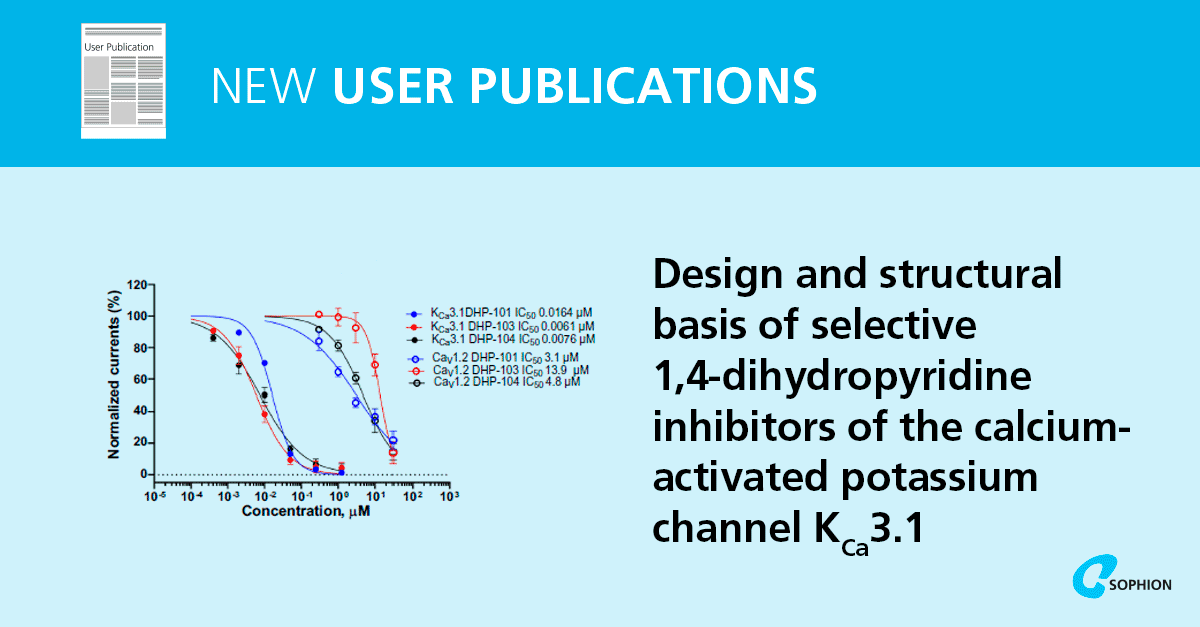
More ion channel insight in our Q2 quarterly review of user publications
Sophion users continue to push the boundaries of ion channel research in Q2 2025, applying cutting‑edge automated patch‑clamp technologies to tackle diverse therapeutic challenges. This quarter’s publications span structural biology, toxin neutralization, neurophysiology protocols, and venom‑inspired modulators – underscoring the versatility of automated patch clamp platforms.
This quarter, we highlight five particularly noteworthy studies that exemplify how QPatch Compact, QPatch and Qube platforms are accelerating discovery, structural insight, and translational potential.
- Selective KCa3.1 Modulation
Ong et al. (Nanyang Technical University) used QPatch and cryo‑EM to develop DHP‑103, a 1,4‑dihydropyridine that blocks KCa3.1 at 6 nM, spares L‑type calcium channels and >100 off‑targets, and reduces stroke damage and motor deficits when given 12 h post‑insult in rats.
- Saxiphilin‑Mediated Saxitoxin Neutralization
Zakrzewska et al. (UCSF) pairedQPatch Compact assays with crystallography to reveal how frog‑derived saxiphilins “lock” saxitoxin in the NaV pore, creating a blueprint for high‑affinity toxin neutralizers and novel neurotoxin‑targeting biologics.
- High Throughput Neuronal Phenotyping
Ghovanloo et al. (Yale) established aQube‑based voltage‑/current‑clamp protocol and open‑source analysis pipeline for acutely isolated neurons, enabling rapid, unbiased excitability profiling to accelerate target validation in neuropsychiatric and pain research.
- Two Nav Venom Papers from the University of Queensland
Thapa et al. mapped the hydrophobic loop of spider‑venom Tl1a on NaV1.8, defining key structure–activity relationships that guide the design of selective, non‑opioid analgesic peptides.
Sharma et al. refined the pharmacophore for venom-derived NaV1.7 inhibitors by integrating in silico screening with rational engineering, paving the way for next-gen non-opioid analgesics.
